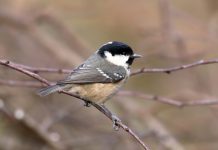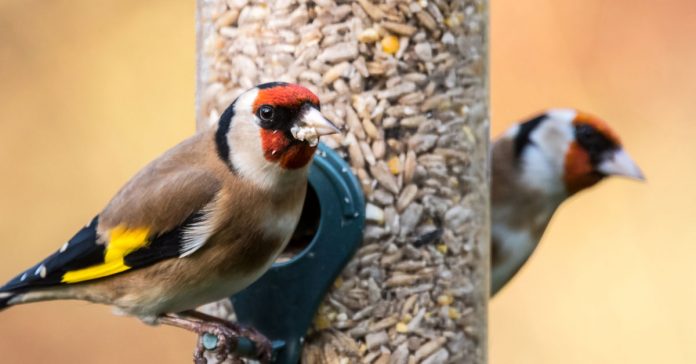Fancy getting in on the garden bird feeding action but don’t know where to start? Well, you’re probably not the only one. Even the most knowledgeable of ornithologists at the BTO would have started somewhere.
If you are looking to join the bird feeding party, and don’t know how to get in, we’ve come up with a simple step by step guide.
It all begins by you essentially doing nothing at all!
1. Observe
Nearly every garden gets at least a small amount of visiting birds. It may be the odd blackbird, a magpie, or perhaps something a bit more “exotic” like a bullfinch or great spotted woodpecker!
It is a good idea to try and discover what comes to your garden on a regular basis, so you can tailor your options to their needs. While you may be able to tell your blackbird apart from your blue tit, find yourself a garden bird book or take a look at our online garden bird library.
Of course, this tailoring might not really be applicable if visitors are few and far between, but we’ll come to that later.
2. Find a spot
Finding the right spot for your bird feeder can be a challenge, and will take a bit of trial and error. In general, if you use a bit of common sense, you’ll go far!
For a bird, your garden is still the “wild” so it’s good to treat it as such. They will need to be able to see what is going on, to keep an eye out for predators such as cats, and rival eaters such as squirrels. This is why it is important to place the feeder in a nice open position, away from ambush spots. The challenge is to find this spot, and combine it with some shelter from the elements.
The final thing to take into account is noise! Ideally, you don’t want the feeder right next to say a patio where you host parties, but obviously you want to be able to see the birds when they come for a snack! Trial and error is the best way to go, but if you bear all this in mind, you’ll be on the right track.
3. Find the right food…and don’t just stick to it
There are many different types of bird food, and it can be a challenge to find the right one, and that’s why we have our garden bird food guide. But still, where to start?
Well, if you have had a good look at the birds in your garden, you should be able to find just the right food for your visitors. One of the main things to bear in mind is to offer a variety. While most of us will opt for an all season seed mix or maybe some bird peanuts, offering a variety means you can cater for a greater variety of birds, which should mean more visitors!
Bird food bundles are a good place to start. You can get all you need in one go, and it gives you just the right resources to mix up the food options.
4. Don’t forget your feeders
A quality all in one bird feeding station is perhaps the go-to option for anyone starting off on their bird feeding “journey”. Bird feeding stations allow you to offer suet, peanuts, seeds and more all in one location.
However, even then, you still need to look at offering more variety if possible. Some birds, like blackbirds, like to feed off the ground, and the shelter of a bird table is great for blue tits and various other small birds.
Just remember that peanuts should always be offered from a feeder, to cut down the chance of a smaller bird choking.
5. Water water everywhere
Garden birds need water for bathing and drinking, so while putting out seed, suet and other types of bird food is of course very helpful, it kind of all falls down if there isn’t a bird bath or other source of water about.
For everything wet, read our guide on why garden birds need water.
6. Keep it clean
Bird food that has “gone off” can be very damaging, which is why bird feeding hygiene is so important. To limit the risk of disease, an easy solution is to only put a small amount of bird food out to start and then to build it up. That way you won’t have food hanging around.
But most importantly, keep it clean. A great idea is to get into the habit of doing a weekly scrub down of all feeders and water receptacles, as well as a refresh of the feed.
Before you go…
Remember to be patient! While we all want to see siskin after fieldfare after fairy wren*, it can take time for birds to “trust” your food source. So keep putting the food out, and who knows, those every day magpies might one day turn into something much more exotic!
*If you see a fairy wren in the UK, then you really are lucky indeed!


























